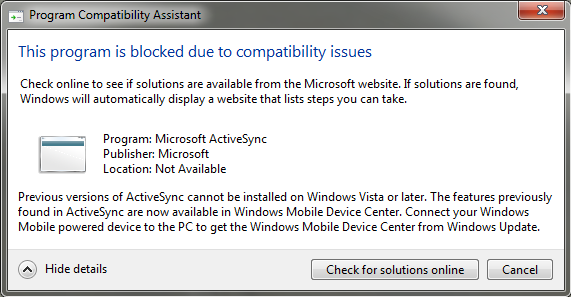Finally Microsoft breaks the silence. A few officials from the world's leading software company has shared little details about Photogon - a new file system that, according to previous rumors, will be integrated into the forthcoming Windows 8 OS. A previous blog from Microsoft last Monday entitled "Building Windows 8" has revealed the additional details of the big picture when it announced the name ReFS (Resilient File System) as the official name of the new file system they are tediously working on.

Surendra Verma, Development Manager for the Windows Storage and File System Department, explained that prior to the official release of Windows 8, ReFS will start its life cycle as a storage system for the Windows Server. Then it will become a storage system for Windows clients and eventually a boot volume once Windows 8 arrives. Since one of Microsoft's primary goals in developing ReFS is to maintain a high degree of compatibility with a subset of widely used NTFS features while at the same time minimizing the ones with limited value, Microsoft is planning to stop supporting selected NTFS (New Technology File System) features including short names, compression, file level encryption, user data transactions, object IDs, named streams, hard links, sparse, extended attributes and quotas.
Now you can probably still recall that Microsoft has been using NTFS since Windows NT and Windows XP has been released. While NTFS - in all its complexity - might have worked perfectly in the past, in today's web 2.0 world, simplicity is the key. ReFS, also called Photogon, is architected to supplement Windows 8's drive-extender-style storage space. Surendra Verma said, “Underneath this reused portion (the code responsible for implementing the Windows file system semantics), the NTFS version of the code-base uses a newly architected engine that implements on-disk structures such as the Master File Table (MFT) to represent files and directories. ReFS combines this reused code with a brand-new engine, where a significant portion of the innovation behind ReFS lies.”
 Rockstar games has unveiled the official website for their much awaited game title Max Payne 3. Scheduled to be released in May, 2012 the game sequel has got huge fan-following waiting eagerly for the release, and looking at the trailers and weapons demo videos as posted after the jump it seems they won't get disappointed.
Rockstar games has unveiled the official website for their much awaited game title Max Payne 3. Scheduled to be released in May, 2012 the game sequel has got huge fan-following waiting eagerly for the release, and looking at the trailers and weapons demo videos as posted after the jump it seems they won't get disappointed.









 Using BitTorrent, eMule and Gnutella for download all the free stuff ?, there exist another technology known mostly to geeks as "
Using BitTorrent, eMule and Gnutella for download all the free stuff ?, there exist another technology known mostly to geeks as "
 PPTP VPN's are popular because of their out-of-the-box native support on most desktop and mobile platforms. And here is your chance to grab one absolutely free as RealVPN is offering 100000 free PPTP protocol based VPN accounts under their limited quantity (100000) BETA registration phase.
PPTP VPN's are popular because of their out-of-the-box native support on most desktop and mobile platforms. And here is your chance to grab one absolutely free as RealVPN is offering 100000 free PPTP protocol based VPN accounts under their limited quantity (100000) BETA registration phase. 